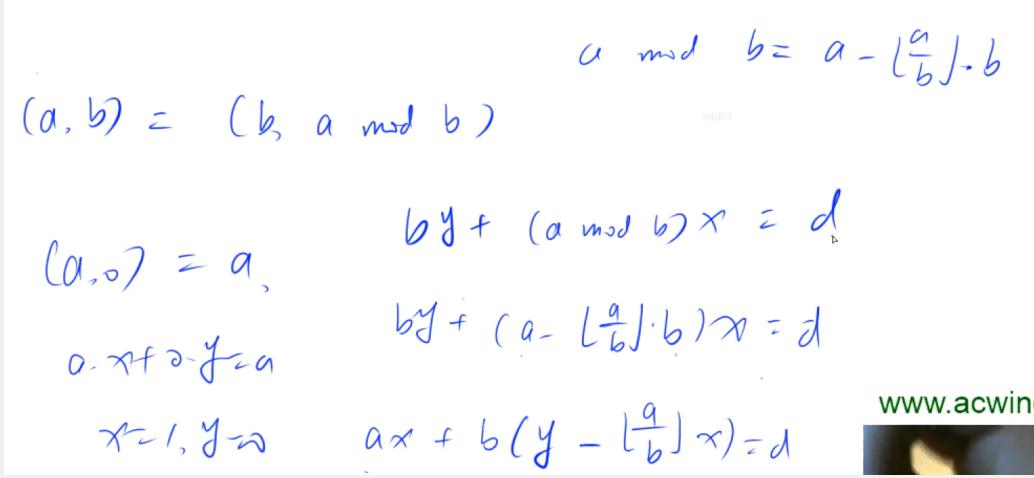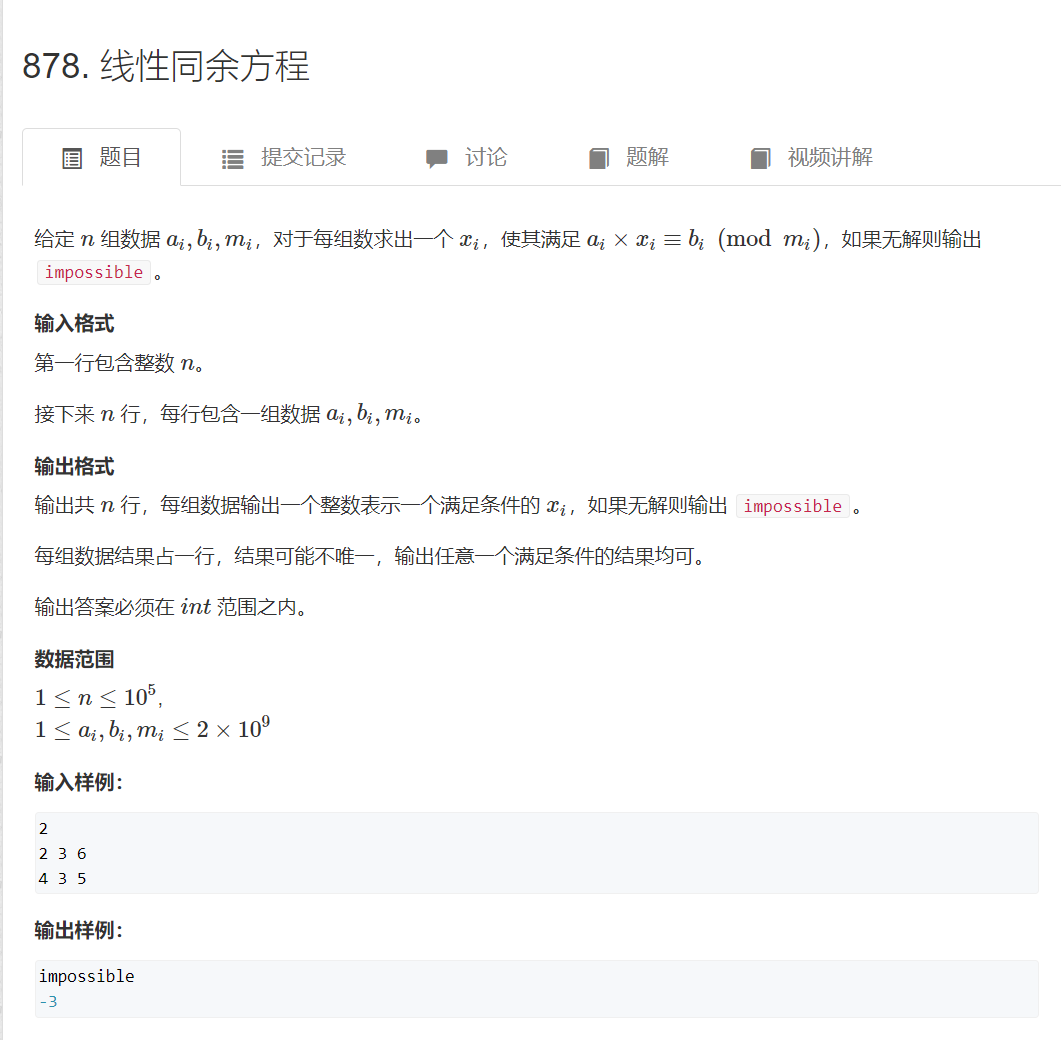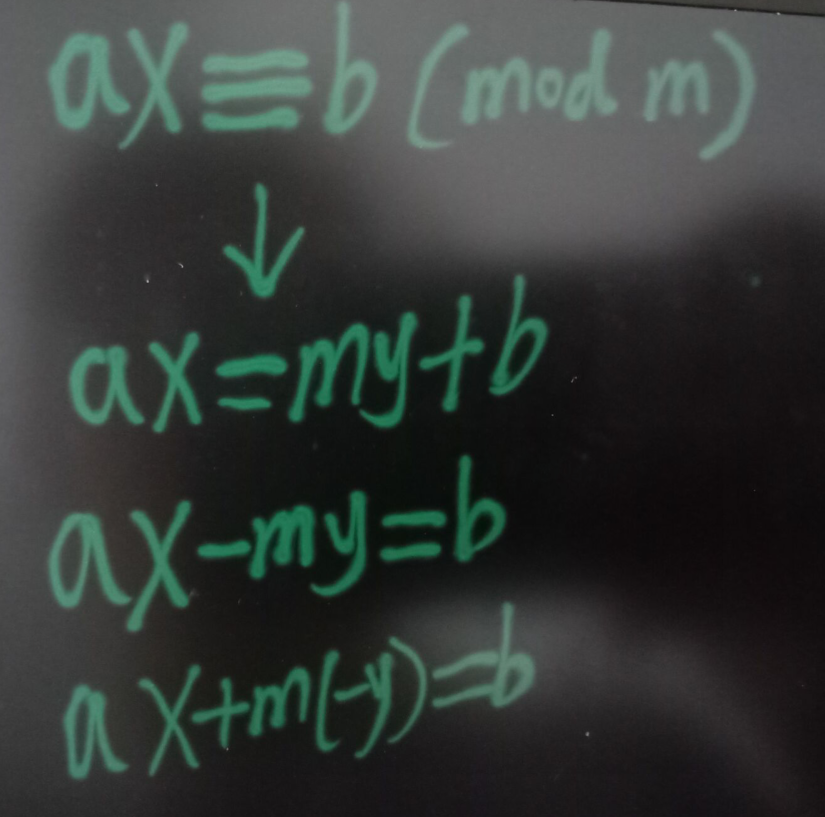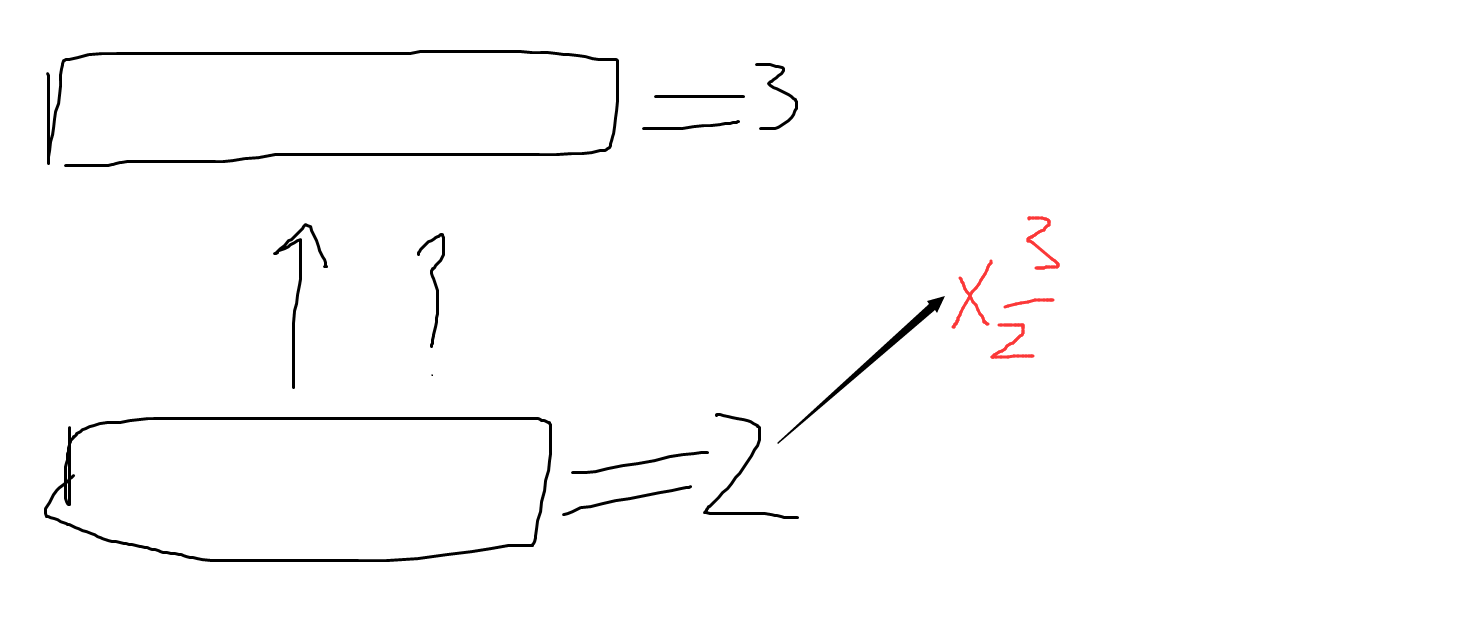这里证明不会讲解,因为写这篇文章的目的是为了让大家简单理解裴蜀定理。
以及可以在算法题中可以运用。主要针对于做题。
裴蜀定理(又称贝祖定理)

特殊性: 对于方程ax+by=1只有整数a和b互质时,方程才有整数解。
扩展欧几里德算法是用来在已知a , b 求解一组x , y ,使它们满足裴蜀(贝祖)等式: a x + b y = gcd ( a , b ) = d
877. 扩展欧几里得算法

https://www.acwing.com/problem/content/description/879/
#include<cstdio>
#include<iostream>
using namespace std;
int exgcd(int a,int b,int &x, int &y)
{
if(!b)
{
x=1,y=0;
return a;
}
int d=exgcd(b,a%b,y,x);
y=y-a/b*x;
return d;
}
int main(void)
{
int t; cin>>t;
while(t--)
{
int a,b,x,y; cin>>a>>b;
exgcd(a,b,x,y);
cout<<x<<" "<<y<<endl;
}
return 0;
}
#include<bits/stdc++.h>
using namespace std;
int exgcd(int a,int b,int& x,int& y)
{
if(!b) return x=1,y=0,a;
int d=exgcd(b,a%b,y,x);
y=y-a/b*x;
return d;
}
int main(void)
{
int n; cin>>n;
while(n--)
{
int a,b,x,y; cin>>a>>b;
exgcd(a,b,x,y);
cout<<x<<" "<<y<<endl;
}
return 0;
}
878. 线性同余方程
https://www.acwing.com/problem/content/880/
这不就是裴蜀定理么? 我们知道1可以用扩展的欧几里得来求解。如同上面的是一样。
但是我们这里是 b。 我们可以先求 ax+my=gcd(a,m) 最后在乘以一个倍数就可以了。
我们平常求是这样的。
那么这里也是一样的我们求出一个x后再乘以一个数才为b即 X x b / gcd(a,m)
注意的是: b必须是gcd(a,m)的倍数,如果不是倍数,那么我们求x的过程中就会乘一个小数,那么x就不是整数了。
题目明确的给出 x 必须是整数。
结果得取m的模防止爆intax%m==(a*x%m)%m 故结果需要对m取模
#include<cstdio>
#include<iostream>
#include<algorithm>
using namespace std;
typedef long long int LL;
LL exgcd(LL a,LL b,LL &x,LL &y)
{
if(!b){
x=1,y=0;
return a;
}
int d=exgcd(b,a%b,y,x);
y=y-a/b*x;
return d;
}
int main(void)
{
int t; cin>>t;
while(t--)
{
LL a,b,m; cin>>a>>b>>m;
LL x,y,d;
d=exgcd(a,m,x,y);
if(b%d) cout<<"impossible"<<endl;
else cout<<x*b/d%m<<endl;
}
return 0;
}
#include<bits/stdc++.h>
using namespace std;
typedef long long int LL;
LL exgcd(LL a,LL b,LL &x,LL &y)
{
if(!b) return x=1,y=0,a;
int d=exgcd(b,a%b,y,x);
y=y-a/b*x;
return d;
}
int main(void)
{
int n; cin>>n;
while(n--)
{
LL a,b,m,x,y,d; cin>>a>>b>>m;
d=exgcd(a,m,x,y);
if(b%d) puts("impossible");
else cout<<x*b/d%m<<endl;
}
return 0;
}
今天的文章裴蜀定理 【浅讲】分享到此就结束了,感谢您的阅读。
版权声明:本文内容由互联网用户自发贡献,该文观点仅代表作者本人。本站仅提供信息存储空间服务,不拥有所有权,不承担相关法律责任。如发现本站有涉嫌侵权/违法违规的内容, 请发送邮件至 举报,一经查实,本站将立刻删除。
如需转载请保留出处:http://bianchenghao.cn/6430.html




